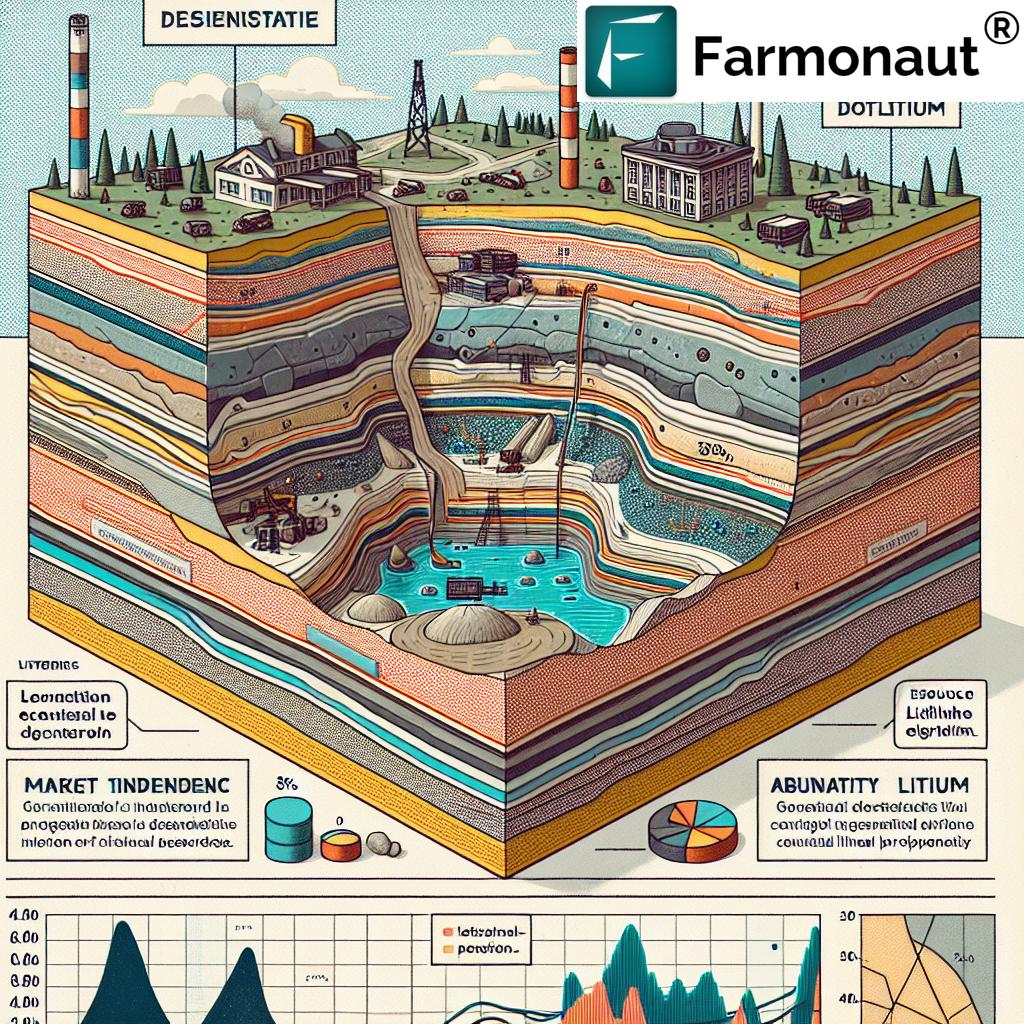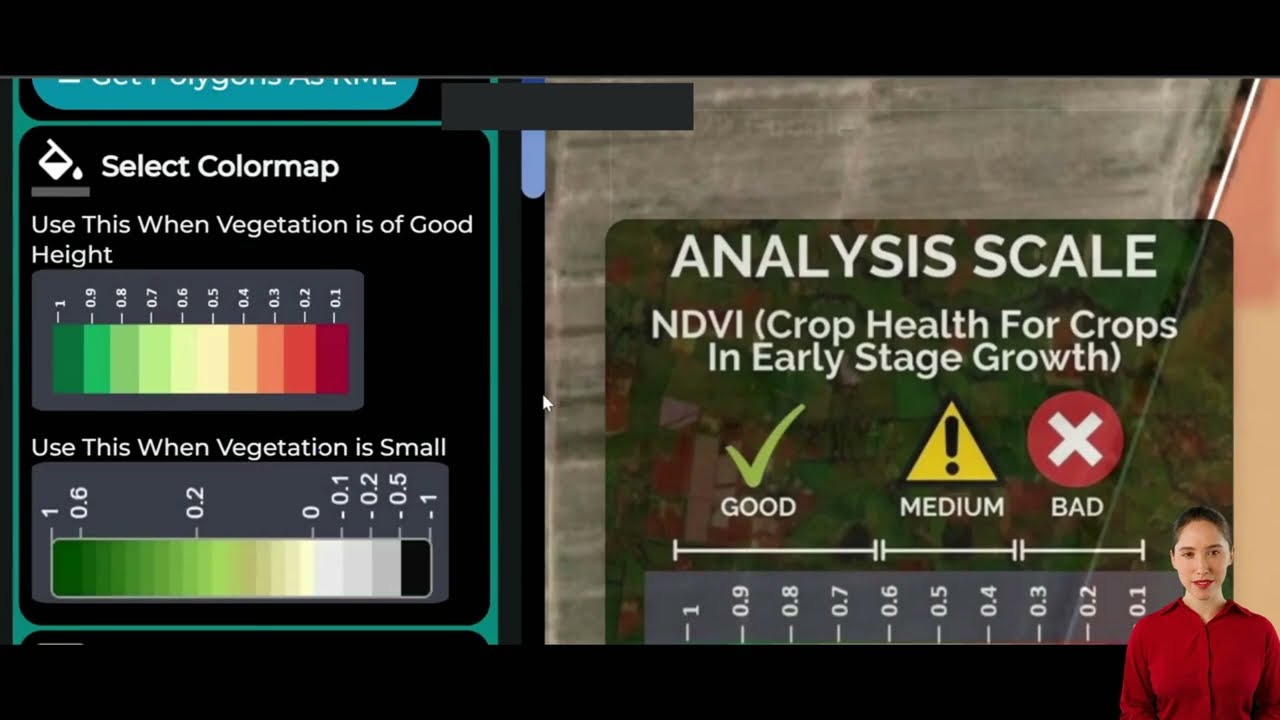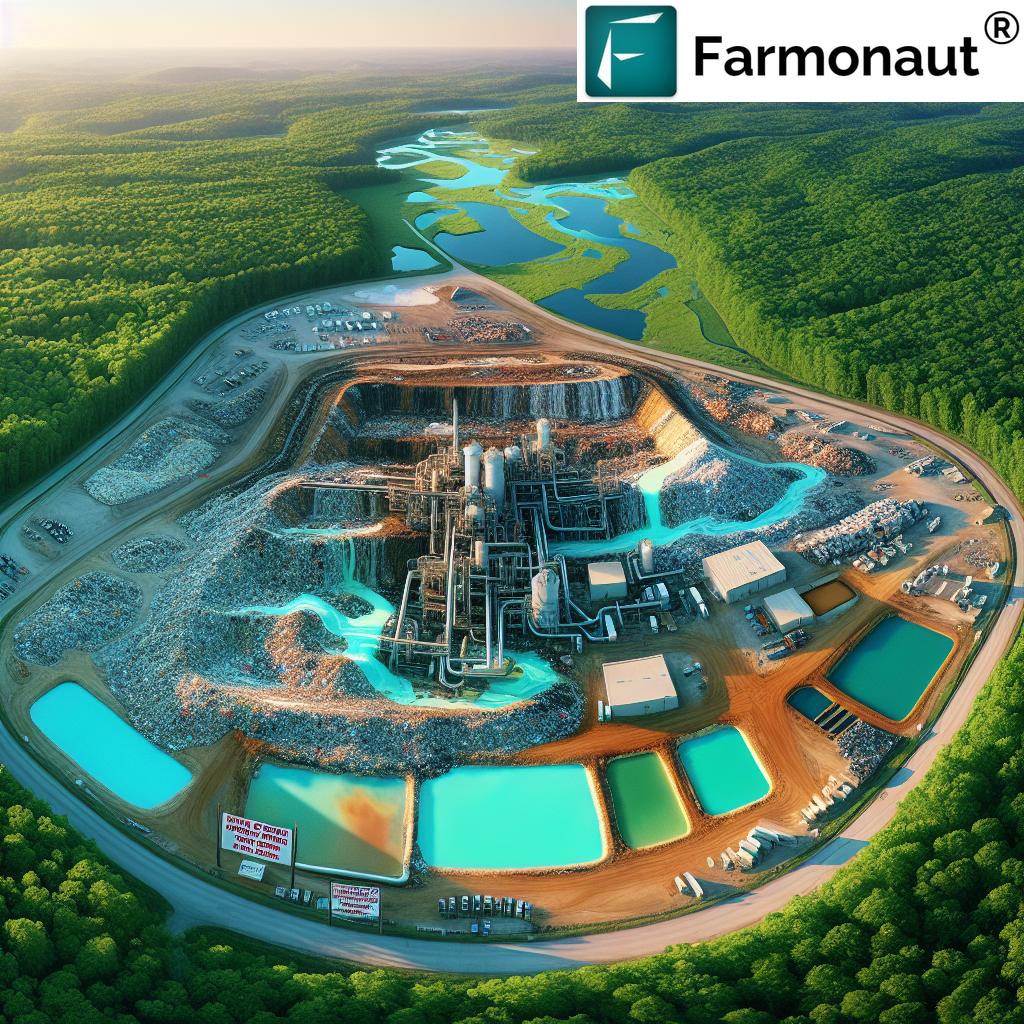Unlocking Utah’s Critical Minerals: Potash and Lithium Exploration Boosts US Supply Chain Security

“Utah’s Paradox Basin potash exploration could significantly boost US domestic production, potentially impacting 95% of current imports.”
In the heart of Utah’s rugged landscape lies a treasure trove of critical minerals that could reshape the United States’ approach to resource independence and supply chain security. The Paradox Basin, with its vast reserves of potash and lithium, is emerging as a focal point for mineral exploration, promising to strengthen America’s position in the global market for these essential resources. As we delve into this exciting development, we’ll explore how the Green River Project is set to transform the critical minerals landscape, potentially revolutionizing US food security and energy independence.
The Strategic Importance of Utah’s Mineral Wealth
The Green River Project, spearheaded by American Critical Minerals Corp., is at the forefront of this mineral revolution. Situated in Utah’s Paradox Basin, just 20 miles northwest of Moab, this initiative is strategically positioned to tap into high-grade potash deposits and lithium brine resources. The project’s location offers significant logistical advantages, including proximity to major rail hubs, airports, roads, water sources, and labor markets.
What makes this exploration particularly compelling is its potential impact on critical minerals supply chains. The United States has long been dependent on foreign sources for both potash and lithium, two minerals that play crucial roles in agriculture and energy sectors respectively. By developing domestic sources, the Green River Project aims to reduce this dependency and enhance national security.
Potash: Fertilizing America’s Future
Potash, a vital component in fertilizers, is essential for ensuring food security. Currently, the US imports approximately 96.5% of its annual potash requirements. The development of high-grade potash deposits in Utah could significantly alter this dynamic, providing a domestic source for this critical mineral.
The exploration target for potash in the Green River Project is substantial. While specific figures are yet to be confirmed through further exploration, the potential for large-scale production is evident. This could not only reduce import dependency but also position the US as a key player in the global potash market, estimated to be worth over $50 billion annually and growing at a compound annual growth rate (CAGR) of close to 5%.
Lithium: Powering the Green Energy Revolution
Lithium, often referred to as ‘white gold,’ is a cornerstone of the green energy transition. Its role in battery production makes it indispensable for electric vehicles and renewable energy storage systems. The Paradox Basin is believed to contain up to 56 billion tonnes of lithium brines, potentially the largest such resource in the US.
The Green River Project’s exploration of lithium brine resources comes at a critical time. Global lithium demand is estimated to be over 1 million tonnes and growing at a CAGR of nearly 20%. By tapping into these resources, the US could secure a domestic supply of this vital mineral, reducing reliance on foreign sources and supporting the growth of its green energy sector.
Exploration and Technical Aspects
The exploration process in the Green River Project is leveraging historical data from oil and gas production in the Paradox Basin. This wealth of geologic information from historic wells provides valuable insights, validating and de-risking the potential for high-grade potash and significant lithium resources.
American Critical Minerals Corp. holds a substantial land position in the area, including:
- Eleven State of Utah (SITLA) mineral and minerals salt leases covering approximately 7,050 acres
- 1,094 federal lithium brine claims (BLM Placer Claims) covering 21,150 acres
- 11 federal (BLM) potash prospecting permits covering approximately 25,480 acres
This extensive coverage allows for comprehensive exploration across the entire Green River Project area, totaling approximately 32,530 acres.

Drill Data and Resource Estimates
The company is authorized to drill a total of 7 exploratory drill holes across the Project, pending bonding for the recently approved 4 drill holes. This drilling program will be crucial in confirming and expanding upon the promising data already available.
Wells in and around the project have reported impressive mineral concentrations:
- Lithium up to 500 parts per million (ppm)
- Bromine up to 6,100 ppm
- Boron up to 1,260 ppm
These figures, along with data from nearby potash production and advanced lithium projects, reinforce the potential of the Green River Project to become a significant source of both potash and lithium.
Market Growth and Economic Impact
The development of the Green River Project comes at a time of significant growth in the markets for both potash and lithium. As mentioned earlier, the global potash market is substantial and growing steadily. The lithium market, driven by the rapid expansion of electric vehicle production and renewable energy storage, is experiencing even more dramatic growth.
The economic impact of developing these resources domestically cannot be overstated. It would create jobs, stimulate local economies, and potentially position the US as an exporter of these critical minerals. Furthermore, by reducing reliance on imports, it would provide a hedge against geopolitical uncertainties that can affect global supply chains.
Implications for US Critical Minerals Policies
The Green River Project aligns closely with recent shifts in US critical minerals policies. In March 2024, the US Senate introduced a bill to include key fertilizers and potash on the US Department of Interior’s list of Critical Minerals, which already includes lithium. This legislative move underscores the growing recognition of these minerals’ importance to national security and economic stability.
By developing domestic sources of potash and lithium, the US can:
- Reduce vulnerability to supply disruptions
- Enhance national security by decreasing reliance on foreign sources
- Support the growth of key industries, including agriculture and green energy
- Create a more resilient and self-sufficient economy
The success of projects like Green River could pave the way for more comprehensive policies supporting domestic mineral exploration and production, further strengthening the US position in global mineral markets.
Environmental Considerations and Sustainable Practices
While the potential economic benefits of the Green River Project are significant, it’s crucial to consider the environmental aspects of mineral exploration and production. The company is committed to implementing sustainable practices throughout the exploration and potential future production phases.
Some key environmental considerations include:
- Water management: Efficient use and recycling of water resources in the arid Utah environment
- Land reclamation: Plans for restoring explored areas to their natural state
- Energy efficiency: Implementing modern, energy-efficient technologies in exploration and potential future production
- Minimizing carbon footprint: Exploring ways to reduce greenhouse gas emissions associated with mineral extraction and processing
By adhering to strict environmental standards, the Green River Project aims to demonstrate that critical mineral production can be carried out responsibly and sustainably.
Comparative Analysis: Utah’s Resources in the Global Context
To better understand the significance of Utah’s potash and lithium resources, let’s examine how they compare to global supply metrics:
| Mineral Type | Estimated Utah Reserves | Current US Production | Global Production | Projected Market Growth | Key Applications |
|---|---|---|---|---|---|
| Potash | Exploration Target: Significant (exact figures pending further exploration) | 3.5% of domestic demand | ~70 million tonnes/year | ~5% CAGR | Fertilizers, industrial processes |
| Lithium | Potential for up to 56 billion tonnes in brines | Minimal | ~100,000 tonnes/year | ~20% CAGR | Batteries, electronics, glass, ceramics |
This comparison highlights the potential for Utah’s resources to significantly impact both domestic and global markets, particularly in reducing US import dependence and potentially establishing the country as a major supplier of these critical minerals.
Challenges and Opportunities
While the prospects for the Green River Project are promising, it’s important to acknowledge the challenges that lie ahead:
- Technical challenges in extraction and processing, particularly for lithium from brines
- Regulatory hurdles and environmental permitting processes
- Market fluctuations and competition from established global producers
- Infrastructure development needs to support large-scale production
However, these challenges also present opportunities for innovation and technological advancement. The development of more efficient extraction methods, for instance, could not only benefit the Green River Project but also advance the entire mineral exploration industry.
“The Green River Project in Utah aims to tap into high-grade potash deposits and lithium brine resources, targeting a multi-billion dollar market.”
The Role of Technology in Modern Mineral Exploration
Advanced technologies are playing a crucial role in making the Green River Project viable. From satellite imaging to AI-powered data analysis, modern exploration techniques are helping to identify and assess mineral deposits with unprecedented accuracy.
Some key technological advancements include:
- 3D seismic imaging for detailed subsurface mapping
- Machine learning algorithms for processing vast amounts of geological data
- Advanced drilling technologies for more efficient and environmentally friendly exploration
- Innovative extraction methods, particularly for lithium from brines
These technologies not only improve the efficiency of exploration but also help in minimizing environmental impact, a crucial consideration in modern mining practices.
The Broader Impact on US Energy Independence
The development of domestic lithium resources through projects like Green River has far-reaching implications for US energy independence. As the world transitions towards renewable energy and electric vehicles, lithium becomes increasingly critical. By securing a domestic supply, the US can:
- Reduce reliance on foreign lithium sources
- Support the growth of its electric vehicle industry
- Enhance energy storage capabilities for renewable power sources
- Strengthen its position in the global clean energy market
This push towards energy independence aligns with broader national goals of reducing carbon emissions and combating climate change, while also ensuring economic security in a rapidly evolving global energy landscape.
Investor Perspective: Risks and Opportunities
For investors, the Green River Project represents both significant opportunities and notable risks. On the opportunity side, the potential for high-grade mineral deposits in a stable jurisdiction like the United States is attractive. The growing demand for both potash and lithium suggests strong market potential for years to come.
However, investors must also consider the risks:
- Exploration risk: Despite promising indicators, there’s always uncertainty in mineral exploration
- Market risk: Commodity prices can be volatile, affecting project economics
- Regulatory risk: Changes in mining or environmental regulations could impact the project
- Technological risk: The success of the project may depend on developing or implementing new technologies
Prudent investors will closely monitor the progress of exploration activities, regulatory developments, and market trends in assessing the project’s potential.
Future Outlook and Conclusion
The Green River Project stands at the forefront of a potential revolution in US critical minerals supply. By tapping into Utah’s rich potash and lithium resources, it could play a pivotal role in strengthening domestic supply chains, enhancing food security, and supporting the transition to green energy.
As exploration continues and more data becomes available, the true potential of these resources will become clearer. However, the project’s strategic importance is already evident. It aligns with national goals of reducing import dependence, creating jobs, and securing critical resources for future generations.
The success of the Green River Project could serve as a model for responsible, sustainable mineral development in the United States. It demonstrates how domestic resources can be leveraged to address global challenges while supporting local economies and national interests.
As we look to the future, the Green River Project represents more than just a mining venture. It’s a step towards a more secure, self-reliant, and sustainable America. By unlocking Utah’s critical minerals, we’re not just extracting resources from the earth; we’re paving the way for a more resilient and prosperous future.
FAQ Section
- What are the main minerals being explored in the Green River Project?
The Green River Project is primarily focused on exploring potash and lithium resources in Utah’s Paradox Basin. - How could this project impact US mineral independence?
By developing domestic sources of potash and lithium, the project could significantly reduce US reliance on imports, strengthening national mineral independence and supply chain security. - What are the potential economic benefits of the Green River Project?
The project could create jobs, stimulate local economies, and potentially position the US as an exporter of critical minerals, contributing to economic growth and stability. - How does the project address environmental concerns?
The company is committed to implementing sustainable practices, including efficient water management, land reclamation, and minimizing carbon footprint throughout the exploration and potential production phases. - What are the main challenges facing the Green River Project?
Key challenges include technical aspects of mineral extraction, regulatory hurdles, market fluctuations, and the need for infrastructure development to support large-scale production.




















